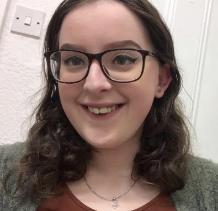Chloe Parr
Research project
The importance of art in the lifestyle of Palaeolithic peoples is complex. It exists as a ‘snapshot’ of a moment in time immortalised through ochre and charcoal, and the information we can glean from it is manifold, examples including seasonality, group dynamics, material usage, and hunting practises. But it also offers insight into more than that - it can also represent the repeated usage of a site over time, and through this point us towards reasons why these caves were frequented. By examining the art as a piece of a puzzle which fits into a wider context, we can draw together all aspects of its creation to better understand why these sites were often repeatedly visited. Additionally, by reflecting our ethnographic understanding of the use of cave sites as locations for rock art and for aggregation onto archaeological examples, we can further explore the way in which Palaeolithic peoples related to and interacted with their environment.
There has been limited research into modern hunter-gatherer aggregation sites due to the constraints of the ethnographic record resulting from colonisation - large social gatherings are among the first social behaviours to be disrupted by colonisation. However, there still exists a quantity of literature which has potential to assist our understanding of Palaeolithic aggregation. Secondly, the rock art which is present within cave sites represents a significant part of the way in which Palaeolithic peoples interacted with their environment. However, Palaeolithic rock art sites tend to be studied in isolation from their landscape context, and as the art is intrinsically and irrevocably tied to its location this gives a shallower interpretation of the art by removing one of its aspects. Further to this, study of the cave itself is incomplete without considering the art which it contains as a vital aspect of its usage.
By combining the art, the landscape, and our ethnographic understanding of aggregation sites, this research brings together several elements with significant potential in order to gain a more well-rounded understanding of aggregation sites. This research will contribute to our understanding of Palaeolithic art in its social context and to aggregations both in the regional context, which is the focus of this thesis, and more broadly.
Profile
BSc Archaeology, University of York (2018-2021), MSc Early Prehistory and Human Origins, University of York (2021-2022)
Research interests
- Palaeolithic art
- Aggregation
- Human origins
- Ethnography
Teaching
GTA for:
- Artefacts and Materials (Autumn 2023)
- Introduction to Archaeological Sciences (Spring 2024)

